Take a photo of an invoice with your mobile phone and automatically save it in the system; control your cash flow at a glance from your mobile phone; digital menus that keep reservations, orders and payments under control; delivery apps to escape from the dominance of the platforms; applications to manage queues and capacity, or to pay the bill in 30 seconds; on-demand salary payments to encourage staff loyalty… Never before have restaurants had so many digital solutions available to them to manage their business and make it more profitable; here is a review of some of them.

It’s no secret that the pandemic has catapulted the digitalisation of the hospitality industry, a process that was already underway, but has since been irreversibly accelerated. As an example, let me show you some of the countless digital solutions for hospitality establishments that have emerged or been developed in the last year, which gives you an idea of the dizzying pace of new solution launches and how startups are adapting to the changing demands of the sector.
And when we say changing, even the POS software itself is changing, which makes it possible to ensure the comprehensive management of any hospitality business, in an increasingly easier and faster way. This is the case, for example, of Ticksy, a new POS software for the hospitality industry designed to facilitate daily work, which allows all the establishment’s processes to be digitalised: supplier orders, charges, menu orders and virtual menus with QR codes directly connected to the POS, as well as implementing a delivery line.
A highly interesting tool is Pendulo, a cost management system for restaurants designed by Pilar García, a Spanish woman living in London who worked as a financial controller for restaurants. Pendulo helps to keep costs under control and lets you know if your restaurant is profitable at a glance. It now integrates artificial intelligence so that, with a simple photo taken on a mobile phone, the system saves and organises data from invoices, delivery notes and receipts. The application then converts them into Excel reports under critical expense headings, such as raw materials or staff.

Another app, Haddock, also takes care of cost control, which allows the user to take a photo of an invoice or delivery note, digitise it and upload it securely into the cloud, giving the hospitality business owner cost control in the palm of their hand. In addition to costs, it also allows them to upload sales income and to be able to divide it, for example, according to shifts. One of the latest features is the ability to categorise expenses according to raw materials, staff, supplies, rent or others.
Would you like to have more control? No problem: Sighore helps bars and restaurants to digitalise their audit and checklist processes with Audit ICS, a solution that provides greater control and better management of the business, creating a series of records necessary for a correct internal and external service, and ensuring compliance. Say goodbye to the hassle of using paper lists with countless records and checklist questions which are difficult to fill in and don’t include the monitoring of incidents. With Audit ICS all these day-to-day operations can be managed in an easy and digitalised way, providing a true snapshot of how the business is doing.
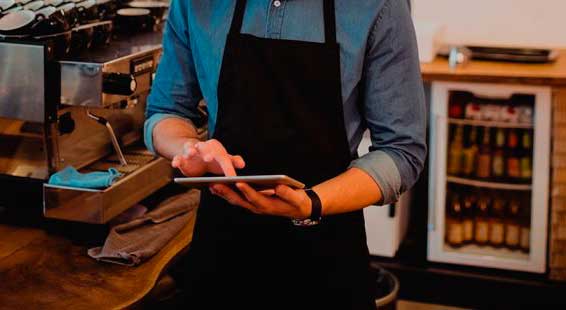
Do you struggle with numbers? Agicap has developed an intuitive and simple program for hospitality businesses to control their cash and have an accurate view of their cash flow to make better decisions, which is especially useful during holiday times when more celebrations are taking place and when bars and restaurants need to maintain or increase menu prices, hire more kitchen and waiting staff or make additional investments. This can all be done more strategically (and better) with a prior cash flow analysis of the business.
Say goodbye to queues
A good restaurant experience starts when you can avoid having to queue. To ensure this, useful apps such as Japi, the latest winner of the last edition of the Barlab Challenge Horeca, have emerged, which allows customers to get in the queue or reserve their table comfortably, from their mobile phone, as well as find out the capacity, of nearby establishments in real time.
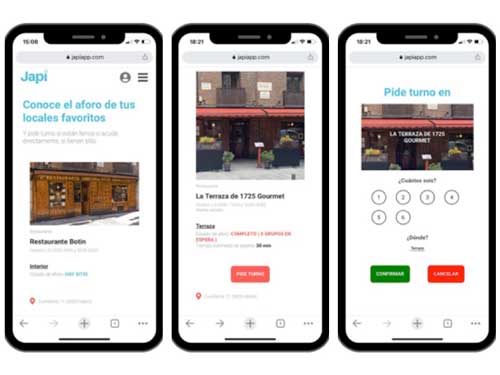
Masqueit has also developed a solution to reduce customer waiting time at restaurants, based on artificial intelligence, while the TimesApp makes it possible to control shifts and request appointments from a mobile phone, and Findyt makes it possible to find a table in real time.
The re-evolution of digital menus
The current health situation has made the traditional paper or laminated menus disappear in one fell swoop in favour of the on-trend QR codes with which customers can access the menu from their mobile phone. Many of these menus are here to stay, and the pioneering QR reader apps have made way for more evolved tools such as CoolMenu, an application which, in addition to providing a customisable digital menu, offers numerous services to the restaurant, such as bookings providing an automatic response, order taking with a POS connection, and the management of orders and takeaways (with no commission charges). In short, it helps to optimise the daily management of restaurants.
We also highlight Bakarta, which specialises in the digitalisation of restaurant menus and is also the only digital menu which you can earn money from by using it. Apart from maintaining a very advanced free version of its dynamic digital menu, it also offers restaurateurs 25% of the revenue generated by advertising on their menus: the advertising is shown to the end consumer when they open the menu.
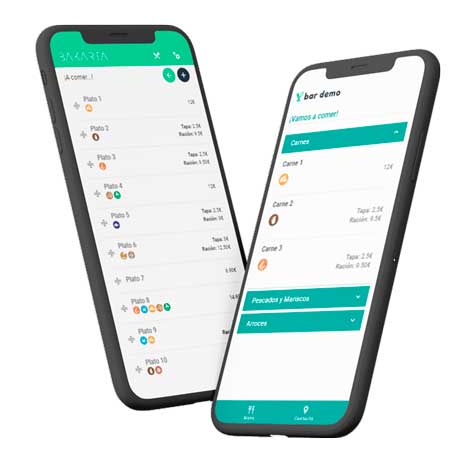
Similarly, Pikotea Software offers an app to restaurateurs to make life easier for their customers by helping them to order from their mobile phones. With its digital solution, customers can order easily via the interactive digital menu, and receive the orders placed from the table at the establishment as if they gave them to the waiter/waitress, or from home or to take away.
Real-time bookings
Bookings are also being revamped and made easier with solutions such as Flipeat, an app that allows you to book a table with a simple click from the mobile application, showing available tables in real time and preventing the dreaded ‘no-shows’, a very important advantage for establishments. The result is a more efficient booking system. “On the one hand, by showing availability in real time, we give visibility to free tables to cover off-peak times, last-minute cancellations and ‘no-shows’, one of the biggest problems faced by restaurants”, explain the app’s creators.
Delivery order management made much easier
The exponential growth of food delivery during the pandemic, which has been the lifeline of many businesses, has also brought many difficulties, especially for independent restaurants that wanted to offer a delivery service: the high costs of third-party delivery apps, their operational complexity and the loss of control they entailed as well as the inability to maintain the relationship with their customers, etc.
This has led to the emergence of interesting digital tools such as Deliverect, which makes it easier for restaurants and chains to manage home delivery orders from different platforms in their own POS, without human interaction and without having to attend to the platforms’ multiple devices, representing a considerable offload in terms of the work required.
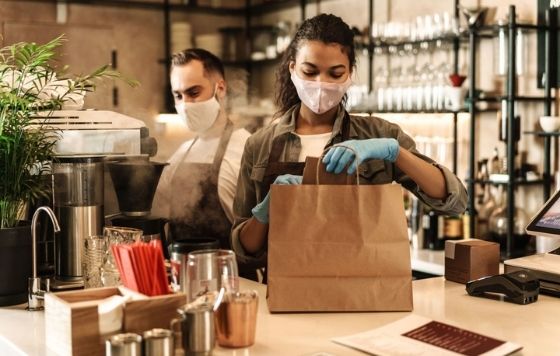
The Irish online ordering platform Flipdish allows establishments to manage orders from their own website, rather than relying on delivery platforms, thus reducing their fees and creating a closer relationship with their customers. By managing their own online ordering, the restaurant maintains its brand on the website and throughout the ordering process, and what’s more: it also has control over the data of its own customers who generate the orders.
Also “empowering” the restaurant is the Kitch solution, the Portuguese delivery platform that allows restaurants to control their orders online “and deliver their dishes, on their own terms”, they explain. It offers restaurants the ability to effortlessly create their own standalone online shop, where they can sell their takeaway and home deliveries, manage all their digital orders on one device, and even decide where their meals are delivered to in the city.

Do you want some more solutions? ReadyMe is an online ordering system that centralises the menu, takeaway and delivery orders, as well as orders to be consumed on the premises, through a mobile app, reducing waiting times and increasing the value of the sale. It proposes self-ordering, which takes the diner one step further. “If they are already used to scanning a QR code with their smartphone to see a menu, why not also offer them the possibility of ordering directly from the table?,” explains Salvador Alcaraz, co-founder of the tool.
Banzzu is a software program that allows restaurants to have a customised website and app with numerous customer loyalty solutions, such as their own delivery system to avoid paying commission to third parties. Similarly, Quicktendr is the platform that manages and unifies all the sales channels of restaurant establishments: table orders, takeaways and delivery orders. It speeds up the processes of taking the order and payment, reduces waiting times, eliminates errors, allows for greater efficiency and, in short, increases the turnover of hospitality establishments.
The payment revolution
One of the current challenges for the hospitality industry is to ensure faster and more secure transactions, to improve their customers’ experience at the time of payment and to allow professionals to optimise costs, procedures and time.
This is addressed by solutions such as Sunday, a new payment service that allows customers to pay their bill in less than 30 seconds using a QR code. “We believe that being able to pay your bill in 30 seconds, leave comments and give larger tips is a better dining experience. For the customer it’s great, and for the restaurateur it’s brilliant as well as being profitable”, explains Christine de Wendel, co-founder of Sunday. As for the Restaurants, they are delighted: customers don’t have to wait for the bill; table turnover is improved; and it conveys a modern image. The app is also easy, fast and very intuitive to use.
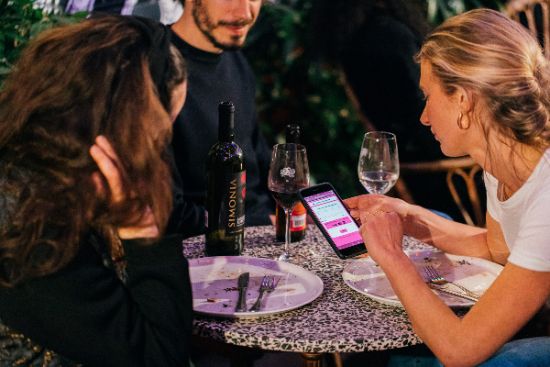
New integrated payment systems, such as those proposed by UniversalPay, are highly interesting. They allow establishments to have the amount to be paid sent automatically from the cash register software to the payment terminal. The results? Fewer errors due to manual allocation and guaranteed cash reconciliation. This company has developed Integrated Table Charging (CMI in its Spanish initials), which “frees up” the sales software in the payment process, allowing split payments, sharing the charge between several diners at the same time and accepting different payment methods.
Payment gateways such as Paytef are also worthy of attention. This one allows interconnection of a simple interface with the POS management application. In the POS itself, an option is configured within the application to be able to make card payments, without the need to use other devices. Something else that makes it great, Paytef is compatible with any management software on the market.
Kitchens also get digitalised
Digital technology reaches all aspects of the hospitality business, even the kitchens. After being acquired by Mapal OS a few months ago, the Easilys kitchen management solution is now the Easilys F&B F&B by Mapal module, which is dedicated to the integrated management of kitchens, for both catering groups and commercial restaurants, so that all their production is centralised. The highly comprehensive tool integrates purchasing and stock inventory, menu creation, analysis of profit margins and food costs, allergen control, waste and residue reduction, etc. In addition, it also deals with relationships with suppliers and the “mise en place” of certain products.

Label Food has developed a state-of-the-art identification and labelling solution for the hospitality industry, which required fast and reliable tablets and printers that would still be able to work under the harsh conditions of kitchens. What did they choose? The XQ-840 two-in-one standalone label printing solution from Bixolon, which includes an 8-inch Android tablet incorporated into a 118-mm (4-inch) direct thermal desktop label printer. The result is SmartFood Lite, an intuitive and dynamic software solution, capable of automating the labelling activities for secondary shelf-life and prepared food as well as providing information. In short, it digitalises the kitchen, providing access to internal systems to ensure food safety and improves operational efficiency.
Another interesting solution is No Problem Cooking, by the Valencian company Orca Business: ERP software specialising in the management, calculation and control of the entire food preparation process, specifically aimed at catering groups, restaurants, and other companies in the hospitality sector. It manages the preparation of healthy dishes, recipes and menus, with exhaustive control of allergens, micro and macronutrients, as well as the scheduling of menus; the forecasting of orders to suppliers; the process of elaborating and preparing dishes and menus for delivery, and invoicing, both for sales and purchases. A comprehensive control of the processes which results in significant cost savings.
Is there anything new for supplier management? Katoo aims to simplify and facilitate the relationship between restaurants and suppliers. Through a simple ordering application, this solution allows chefs and restaurant managers to place their orders quickly, easily and immediately by e-mail or WhatsApp. This streamlines the relationship between the two, reducing errors and increasing efficiency.
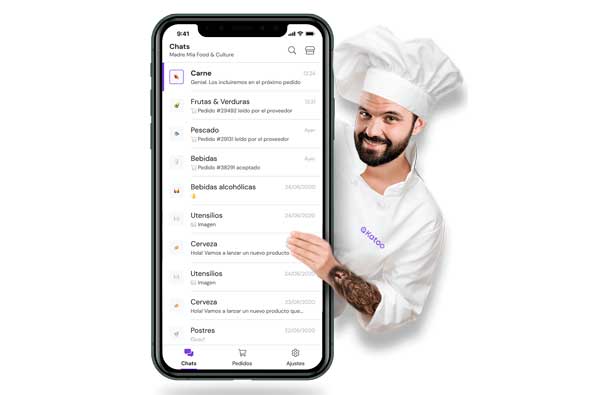
Staff management, a pending task
In today’s challenging times, attracting and retaining staff is a major challenge for many hospitality establishments. This is helped by solutions such as the Flow Learning by Mapal, which is designed to improve the training and professional development of teams working in the hospitality industry. It offers different tools to encourage employees to improve their skills, and makes up to 50+ training modules, a content creation tool, skills development tracking and learning courses available to them.
What about financial well-being? Watch out for the on-demand payroll system, which is starting to spread throughout the restaurant sector. The Payflow app, which allows employees to receive the fraction of their salary they have already worked for instantly and via a mobile application, helps reduce staff turnover in restaurants and bars by 20%, this being a key factor at a time when staff shortages are one of the biggest problems in the sector. It is easy to use and very convenient, especially for younger employees, as it guarantees an immediate deposit in their accounts.
Placing the right employee at the right time, according to demand, is also essential for the establishment. This is the differential value of Orquest a staff planning and management software solution that has won the CaixaBank EntrepreneurXXI Award, and which allows restaurants and hotels to ensure they always have the necessary staff coverage. In addition, employees will be able to choose the working timetable that best suits their needs and in good time to make it easier to ensure their work and family life balance. Its new “Sections” functionality, perfect for restaurants and fast-food establishments, allows them to generate even more efficient task schedules and timetables involving up to 90% less planning time. Considering the fact that both the companies and employees benefit from it, doesn’t sound bad, does it?
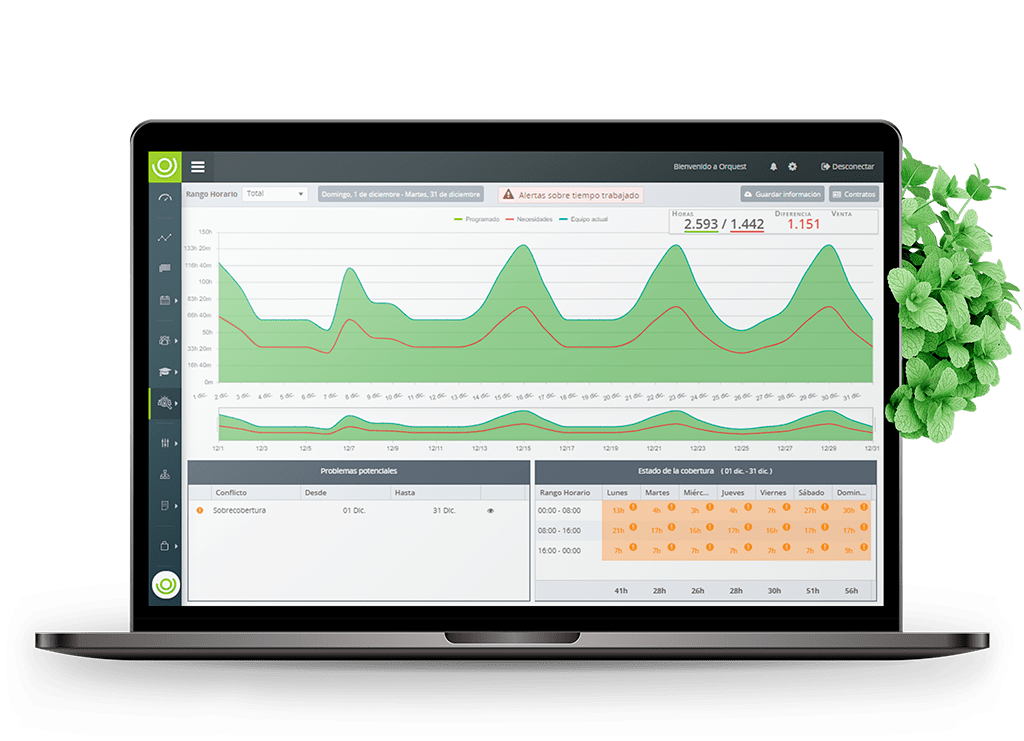
Marta Renovales, Chief Editor of (Profesionalhoreca.com)


